‘15-minute city’ fears for Lancaster are unfounded, says council
and live on Freeview channel 276
The council has defended its decision to look into the concept for the city.
With rumours gaining traction in recent weeks, largely as a result of the news nationally that Oxford is moving forward with its own '15-minute city' plans, the city council has moved to reassure residents that such a plan for Lancaster is at a very early concept stage, and any further progress would involve local consultation.
Advertisement
Hide AdAdvertisement
Hide AdA 15-minute city or neighbourhood is a complete, compact and connected neighbourhood, where people can meet their everyday needs within a short walk or cycle.
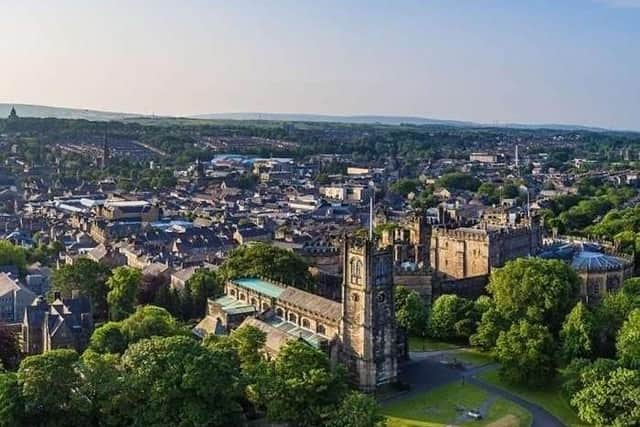

The idea presents benefits including boosting local economies, improving people’s health and wellbeing, increasing social connections in communities, and tackling climate change.
"The 15-minute neighbourhood concept is simply about planning for the future to ensure that the services and amenities that people need and enjoy in their everyday lives can be easily reached and are accessible to everyone,” Coun Gina Dowding, cabinet member with responsibility for planning policy, said.
"It’s not about preventing people from leaving their neighbourhood or removing their rights.”
Advertisement
Hide AdAdvertisement
Hide AdThe Lancaster Local Plan says there are both economic and social benefits to 15 or 20-minute neighbourhoods, but there are also benefits for climate change.
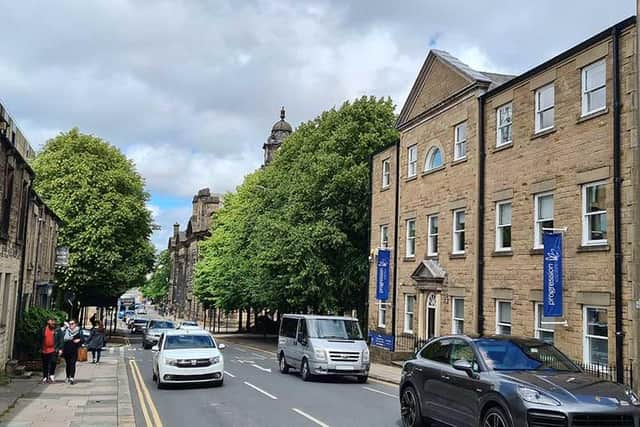

Creating walkable environments, with energy efficient homes, that use low carbon heating sources, existing in a greener environment, has all the mitigation and adaptation benefits previously mentioned. 20-minute neighbourhoods also go further in encouraging us to live locally in all aspects, which can drastically reduce individual’s and the district’s carbon footprint.
The district's Local Plan for 2020 to 2031 sets out proposals for reducing emissions through the use of sustainable transport.
Presently, on-road emissions are the largest source of the district’s total carbon dioxide equivalent emissions, accounting for 34.8 per cent.
Advertisement
Hide AdAdvertisement
Hide AdPlans include improvements to the walking and cycling network, improved access to public transport including sustainable travel-only zones, increased public transport stops, and more electric vehicle charge points.
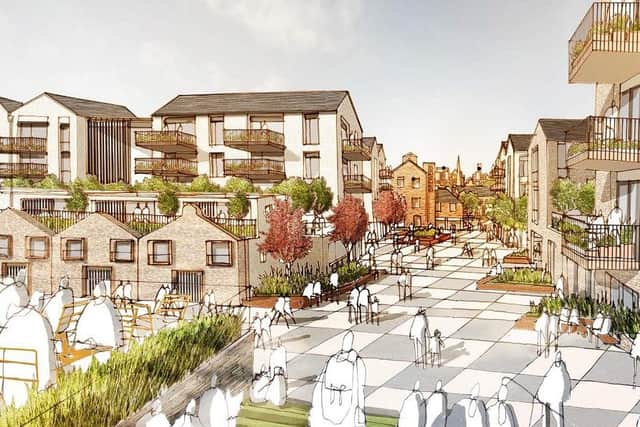

Possible route changes to the one-way system have also been discussed.
As we first reported two years ago, Lancashire County Council’s Lancaster City Centre Movement and Public Realm Strategy aims to create 'more vibrant, pleasant streets with better air quality'.
This includes proposals such as a £12 charge for vehicles and part closure of the one-way system, outlined in the city's Local Plan.
Advertisement
Hide AdAdvertisement
Hide AdThe concepts would change the way traffic, pedestrians and cyclists move through the city centre.
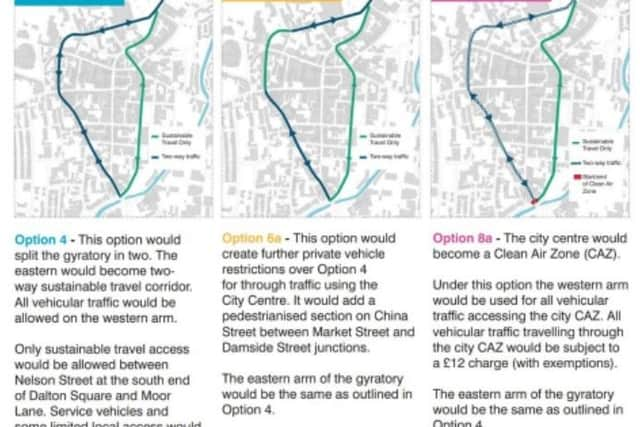

Consultation showed a preference for three options:
*Splitting the one-way system, with two-way traffic for vehicles allowed on the western arm, with the eastern arm prioritised for sustainable travel
*Limiting through-traffic in the city centre. The eastern arm would be prioritised for sustainable travel with the western arm allowing two-way traffic for access. A section at China Street would be fully pedestrianised
*A Clean Air Zone with a congestion charge for all vehicles travelling through the city centre, with exemptions. Use of the one-way system would be split between vehicles subject to the congestion charge and a sustainable travel corridor.
Advertisement
Hide AdAdvertisement
Hide AdIn February 2021, the county council cabinet agreed to take forward these options for detailed analysis, including transport modelling and the impacts on the wider Lancaster highway network. It will also consider the air quality implications of these options.
There will be further consultation on the preferred option.
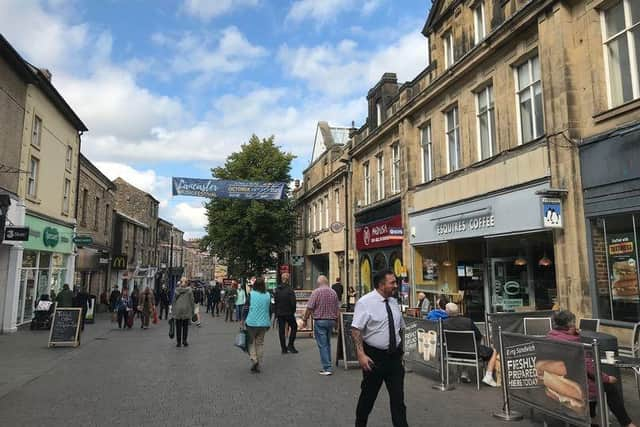

County Coun Aidy Riggott, cabinet member for economic development and growth at Lancashire County Council, said: "We are currently looking carefully at various options to improve the current one-way system in Lancaster to improve people's journeys to and from the city centre.
"This is part of wider proposals for the south Lancaster area which would increase transport options for people.
"A range of options for the city centre are being looked into at this stage, however I have no plans to bring forward any changes in the near future."
Advertisement
Hide AdAdvertisement
Hide AdMeanwhile, consultation is also under way into planned changes to junction 33 at Galgate and the A6 heading towards Lancaster.
The scheme aims to open up the development of new housing in Lancaster by creating access to the Bailrigg Garden Village/South Lancaster Strategic Growth Area.
Proposed travel improvements include:
*A link road with improvements to Hazelrigg Lane and a West Coast Mainline underpass giving access to the proposed Bailrigg Garden Village
*A new road providing access within the South Lancaster Strategic Growth Area, and a new canal bridge
*A new Park & Ride facility south of Lancaster
Advertisement
Hide AdAdvertisement
Hide Ad*Changes to Lancaster's one-way system to create bus priority routes and traffic-free areas
*A cycleway linking the city centre with the university, the Health Innovation Campus and the South Lancaster Strategic Growth Area.
*Safety improvements at the Pointer Roundabout
What are 15-minute cities?
The concept of 15-minute cities suggests that all services, amenities, and leisure facilities are accessible within a 15-20 minute walk or cycle from a person’s front door.
It means cars aren’t needed to go to the shops, get a haircut, or work out, and the overall aim is to improve a sense of community in local areas, reduce pollution and increase health and fitness.
Advertisement
Hide AdAdvertisement
Hide AdThe idea is often credited to a professor at the Sorbonne University in Paris, Carlos Moreno, who unveiled the model in 2016. It was later implemented and supported by the mayor of Paris, Anne Hidalgo, who made it a major part of her re-election campaign in 2020.
But it actually dates back to the 1980s and has been an important aspect of urban planning ideas over the last two decades, introduced in Melbourne, Copenhagen, Utrecht, and Portland under the term '20-minute neighbourhood'.
After Covid-19 lockdowns forced a majority of people to work from home and explore what their local area had to offer, many people have welcomed 15-minute cities.
A number of UK councils have put forward plans to develop 15-minute cities, including Oxford, Sheffield, Bristol, and Canterbury, while planning reforms in Scotland approved in January also propose 20-minute neighbourhoods to tackle the climate crisis and reach net-zero emissions.
Advertisement
Hide AdAdvertisement
Hide AdWhere could the idea be looked at in Lancaster?
Introduction of the idea could see part of Lancaster redesigned into a '15 minute neighbourhood' - a concept which involves a move away from private vehicles, with people encouraged to use more sustainable transport where possible.
Anyone living in the area would have access to essential daily services within a 15-minute walk or bike journey.
Lancaster City Council wants to follow a similar process with its redevelopment of the Canal Quarter and is working alongside PRP Architects to create and execute a masterplan.
Pending the outcome of public consultations, it wants to introduce additional pedestrian and cycle-friendly streets along with creating 580 homes, two public squares, and more than 75,000 sq ft of commercial space in the east part of the city.
Advertisement
Hide AdAdvertisement
Hide AdThe former Mitchell’s Brewery would become a “landmark building” involving a mixed-use space with food and drink opportunities. Other elements include extending Dukes Theatre, improving the public realm, and enhancing existing ginnels.
The plan also includes improved access to the canal for pedestrians, while vehicle access would be controlled to make the canal quarter a pedestrian-friendly space.
Play areas and communal courtyards are also planned for the area.
The city council's masterplan document says: "The proposed masterplan for the Canal Quarter celebrates the heritage and history of the site, considers the retention of the most valuable heritage buildings on site and creates new views of the heritage assets around the site such as Lancaster Castle and the Priory.
Advertisement
Hide AdAdvertisement
Hide Ad"The Canal Quarter will be a sustainable and active place which is integrated both with the city centre and the Lancaster Canal, where contemporary development and hidden heritage assets successfully combine to create a diverse, commercial, cultural and residential neighbourhood."
The council says its intention is to "significantly reduce car penetration into the city" and plans to incentivise more use of the park and ride site at junction 34 of the M6.
It adds: "Car parking will need to be in keeping with the scale of development and not dominate the scheme."
Discussing the Canal Quarter project in 2021, Coun Gina Dowding said: “The Canal Quarter is home to some of Lancaster’s most important cultural assets but is also isolated and under-utilised.
Advertisement
Hide AdAdvertisement
Hide Ad"We want to change that and breathe new life into the site, with proposals which are vibrant, that create areas of new public open space, and buildings that meet the challenge of the climate emergency.
“Of course, the city council cannot do this alone and it will require continued energy and commitment from landowners, developers, businesses and engagement with local residents to create a genuinely desirable and attractive place to live, work and play.
"I’m looking forward with anticipation to the council taking this journey with PRP, as they bring a wealth of experience and skills that will be needed to develop proposals that will benefit Lancaster for generations to come.”
What does the city council say?
Coun Gina Dowding, cabinet member with responsibility for planning policy, said: “The 15-minute neighbourhood concept is simply about planning for the future to ensure that the services and amenities that people need and enjoy in their everyday lives can be easily reached and are accessible to everyone.
Advertisement
Hide AdAdvertisement
Hide Ad"It’s not about preventing people from leaving their neighbourhood or removing their rights.
“We have no plans to use this idea for any specific areas at present and if it is something we ever wish to explore we will be making sure that there will be plenty of opportunities for local residents to have their say.
“Our adopted Local Plan, which was subject to many rounds of consultation and a public inquiry, sets out how much development is needed in the district over the next 10 years to provide the homes and jobs needed to support a growing economy.
"Accommodating this growth will require the exploration of new infrastructure and approaches to the way residents, visitors and businesses use the local transport network.
Advertisement
Hide AdAdvertisement
Hide Ad"This will be achieved by providing the conditions where they have the opportunity to travel quickly and safely to access the services they need. It will also improve choice through the provision of sustainable transport such as cycle, foot and public transport options.
“No decisions on how this will be achieved have been made and any plans for changes to traffic flows and regulations will be led by Lancashire County Council, as highways authority.
“Lancaster city centre already provides the majority of amenities that people require such as shops and GP services within walking distance, and the masterplan for the Canal Quarter reflects this fact.”
Speaking at a recent city council cabinet meeting, city council leader Caroline Jackson said: “The idea for us is about having neighbourhoods where people can walk or cycle to local shops or the doctor or whatever within 15 minutes. It’s about what you can get to easily. If someone else has a different meaning, OK. But we don’t mean that.”
